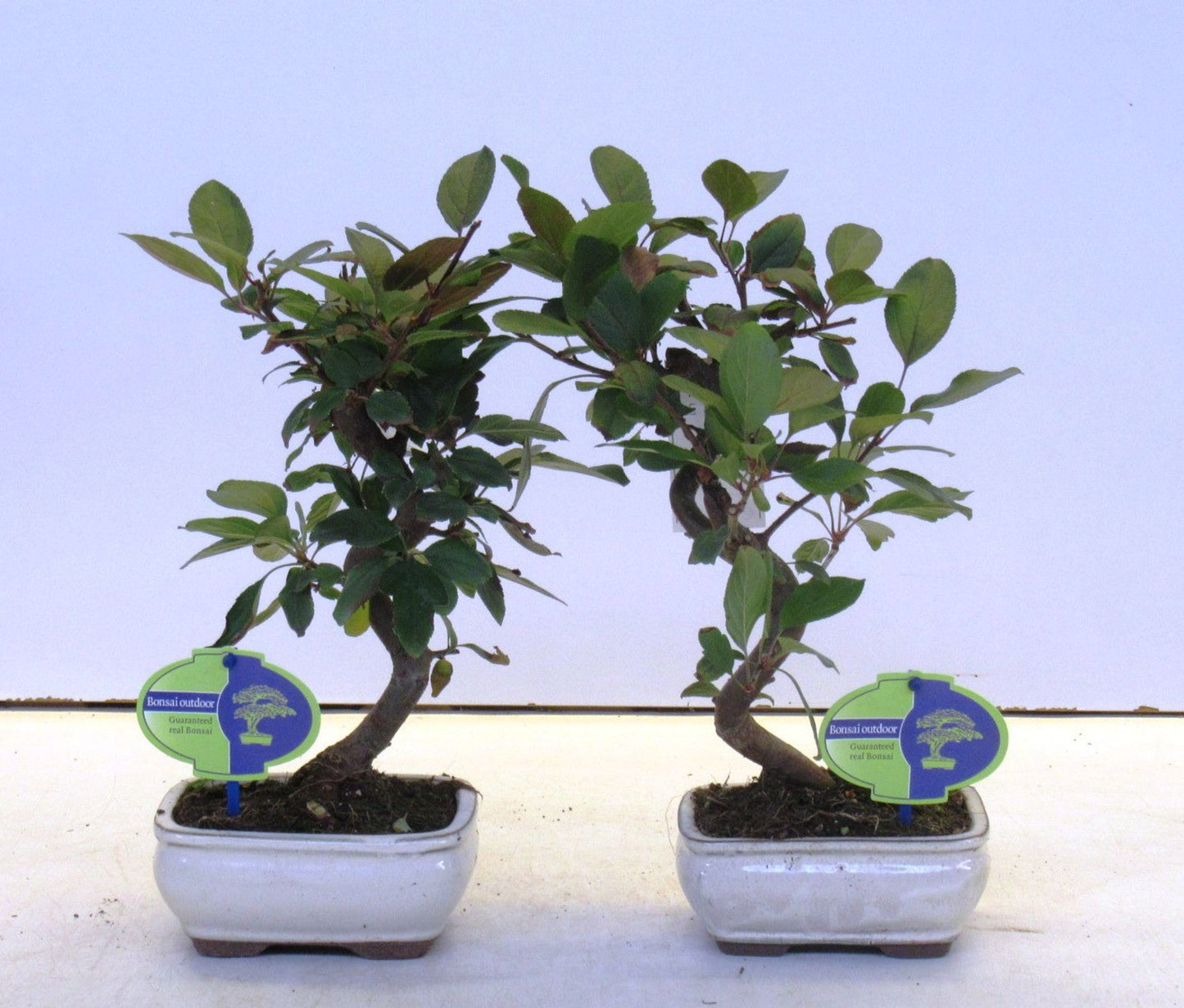تفاح بونزاي
تفاح بونزاي
Couldn't load pickup availability
malus domestica
Growing Malus domestica, commonly known as apple trees, involves several key considerations to ensure a healthy and fruitful plant. Here’s a guide on how to grow Malus domestica:
1. Site Selection: Choose a planting location with well-draining soil. Apple trees prefer slightly acidic to slightly alkaline soil. Ensure the site receives full sunlight, ideally at least 6-8 hours of direct sunlight per day.
2. Planting: Plant apple trees in late winter to early spring, while they are still dormant. Dig a hole wide enough to accommodate the roots without bending or crowding. Plant the tree at the same depth it was in the nursery.
3. Watering: Provide regular watering, especially during dry periods. Water deeply to encourage deep root growth. Be cautious not to overwater, as apple trees are susceptible to root rot in waterlogged soil.
4. Mulching: Apply a layer of organic mulch around the base of the tree to conserve moisture, suppress weeds, and regulate soil temperature.
5. Fertilizing: Fertilize the tree in early spring before new growth begins. Use a balanced fertilizer or one specifically formulated for fruit trees. Avoid excessive nitrogen, as it can promote vegetative growth at the expense of fruit production.
6. Pruning: Prune apple trees annually during late winter or early spring to remove dead, diseased, or crowded branches. Shape the tree to an open center or modified central leader structure to improve air circulation and sunlight penetration.
7. Pest and Disease Control: Monitor for pests such as aphids, codling moths, and apple maggots. Treat infestations promptly with insecticidal soap or other suitable methods. Apply fungicides as needed to control diseases like apple scab or powdery mildew.
8. Thinning: Thin the developing fruit when they are about the size of a dime to encourage larger, healthier apples. Remove excess fruit to prevent branches from breaking under the weight of a heavy crop.
9. Harvesting: Harvest apples when they are fully ripe. The timing depends on the apple variety, so refer to specific recommendations for your chosen cultivar. Twist or gently lift the apple; if it comes off easily, it’s ready for harvest.
10. Winter Care: In colder climates, protect young trees from frost by covering them with burlap or using other frost protection methods. Apply a layer of mulch around the base of the tree in late fall to help regulate soil temperature.
11. Dormant Spray: Apply dormant sprays in late winter or early spring to control overwintering pests and diseases. Use horticultural oil or copper-based sprays.
12. Variety Selection: Choose apple varieties suited to your climate and desired use (eating, cooking, or cider). Consider disease-resistant varieties for easier maintenance.
Remember that specific care practices may vary based on your local climate, soil conditions, and the apple variety you’re growing. Regular observation, proper care, and timely interventions will contribute to a healthy and productive apple tree.
Share



